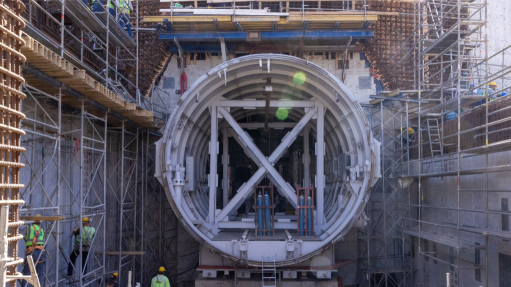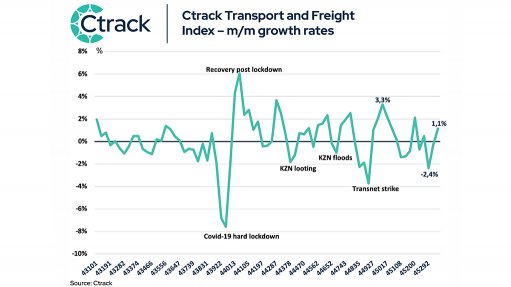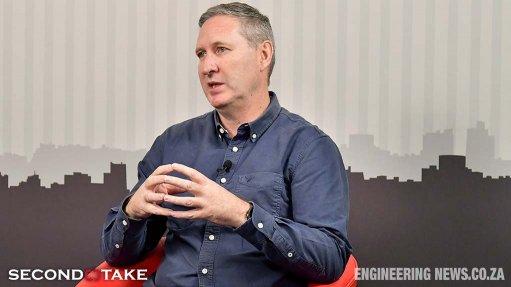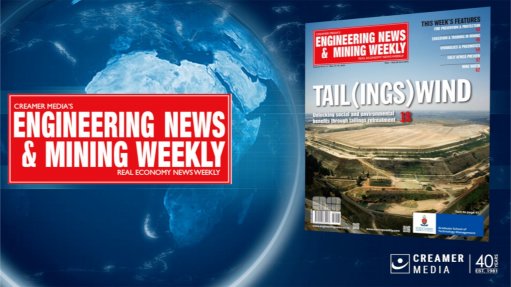Taking a strategic approach to business automation
This article has been supplied as a media statement and is not written by Creamer Media. It may be available only for a limited time on this website.
By Sumit Kumar Sharma, Enterprise Architect and Head of Advisory Services at In2IT
Digital platforms and Robotic Process Automation (RPA), once ground-breaking innovations, have become something of a commodity in today’s world. However, the development of low code/no code platforms and the addition of intelligence and machine learning have added a new dimension that can potentially revolutionise the way businesses operate. The challenge is that automation is entirely dependent on the underlying processes, and if these are problematic, automation will simply cause poor processes to happen faster. A strategic approach to automation is key in leveraging optimisation and enhanced productivity.
Automation for the right reasons
While business automation is a rapidly maturing technology field, it needs to be deployed appropriately if it is to deliver maximum benefit. It is not invasive technology, and it was never designed to solve crucial business problems or improve processes, and if it is deployed with the intention of fixing data issues then things will inevitably go wrong. If the underlying processes are not optimal and are not delivering what they should, the only thing automation will do is perform the incorrect action faster.
Where automation does shine is in ‘cookie cutter’ processes that are fairly standard across organisations, like payroll and invoicing. For example, automation can match purchase order, invoice, and proof of delivery to automatically approve a payment. This can enhance turnaround times from a few weeks to almost immediate, through a zero-touch process that requires no human intervention. This in turn can give the procurement department impetus to negotiate for a discount from suppliers if payment can be guaranteed for the same day as receipt of invoice. The return on investment on this type of automation can be significant and can be realised fast – if the technology is employed in the right manner.
Enter the world of hyper-automation
The goal of automation is to optimise operational efficiency, to become more productive and efficient while reducing operational cost. This can apply to multiple business processes. We are entering a world where the majority of solutions and platforms available now incorporate some element of automation. These technologies work together and create a hyper-automated environment within the digital workforce.
This changes the role of humans, empowering them while also changing the skill sets required, and can have a profound impact on the way businesses operate. Automation is no longer a business enabler, but a catalyst for the complete transformation of the digital environment. Chat bots are now standard, and voice assistants with natural language processing capabilities are becoming a viable option for people to actually speak to and perform certain activities. An example of this is Google Assistant, which is used by restaurants for making reservations and even taking orders.
Changing the future
While the applications for hyper-automation are currently small things, they can all add up to vastly improved efficiency and enhanced customer experiences. As the technology matures further, we will see increasingly roboticised processes and functions – the drive-thru may one day be entirely operated by automation, and call centres are moving toward being deployed solely in a data centre with no human workers at all.
The opportunities are many, and we are only just beginning to explore the potential of automation. One thing that businesses need to consider however is that you cannot automate the front-end (for example by automating invoice payment) without also deploying automation in the back-end (if the invoice is posted rather than being digitally submitted, the entire automation chain will fail). Process and function automation need to be end-to-end, and it needs to be driven by an appropriate business case. The environment as well as external third parties and suppliers must be considered as part of an overall automation strategy.
Umbrella or towel?
Ultimately automation (and any transformation) needs to be informed by business strategy and by context first, so that problems can have effective solutions. To take a simple analogy, if a person is wet, you can either give them a towel or an umbrella. Each is a solution, but they apply to different situations – if the person is standing in the rain, a towel will not be helpful; conversely if the person fell into a pool, then an umbrella will be useless.
Processes also need to be relooked and optimised before they can be automated, because automating a bad business process will just ensure that ineffective things happen at a more rapid pace. Strategy and planning are key, and automation should always be done with the purpose of transforming your business, not just for the sake of adding technology into the stack. Finally, data, applications and legacy infrastructure can all be stumbling blocks on any automation journey, which again makes strategy essential. The right IT partner can be an invaluable asset in ensuring that strategic, end-to-end transformation is the focus and that the appropriate platforms and solutions are in place to enable this to happen.
Comments
Press Office
Announcements
What's On
Subscribe to improve your user experience...
Option 1 (equivalent of R125 a month):
Receive a weekly copy of Creamer Media's Engineering News & Mining Weekly magazine
(print copy for those in South Africa and e-magazine for those outside of South Africa)
Receive daily email newsletters
Access to full search results
Access archive of magazine back copies
Access to Projects in Progress
Access to ONE Research Report of your choice in PDF format
Option 2 (equivalent of R375 a month):
All benefits from Option 1
PLUS
Access to Creamer Media's Research Channel Africa for ALL Research Reports, in PDF format, on various industrial and mining sectors
including Electricity; Water; Energy Transition; Hydrogen; Roads, Rail and Ports; Coal; Gold; Platinum; Battery Metals; etc.
Already a subscriber?
Forgotten your password?
Receive weekly copy of Creamer Media's Engineering News & Mining Weekly magazine (print copy for those in South Africa and e-magazine for those outside of South Africa)
➕
Recieve daily email newsletters
➕
Access to full search results
➕
Access archive of magazine back copies
➕
Access to Projects in Progress
➕
Access to ONE Research Report of your choice in PDF format
RESEARCH CHANNEL AFRICA
R4500 (equivalent of R375 a month)
SUBSCRIBEAll benefits from Option 1
➕
Access to Creamer Media's Research Channel Africa for ALL Research Reports on various industrial and mining sectors, in PDF format, including on:
Electricity
➕
Water
➕
Energy Transition
➕
Hydrogen
➕
Roads, Rail and Ports
➕
Coal
➕
Gold
➕
Platinum
➕
Battery Metals
➕
etc.
Receive all benefits from Option 1 or Option 2 delivered to numerous people at your company
➕
Multiple User names and Passwords for simultaneous log-ins
➕
Intranet integration access to all in your organisation

















